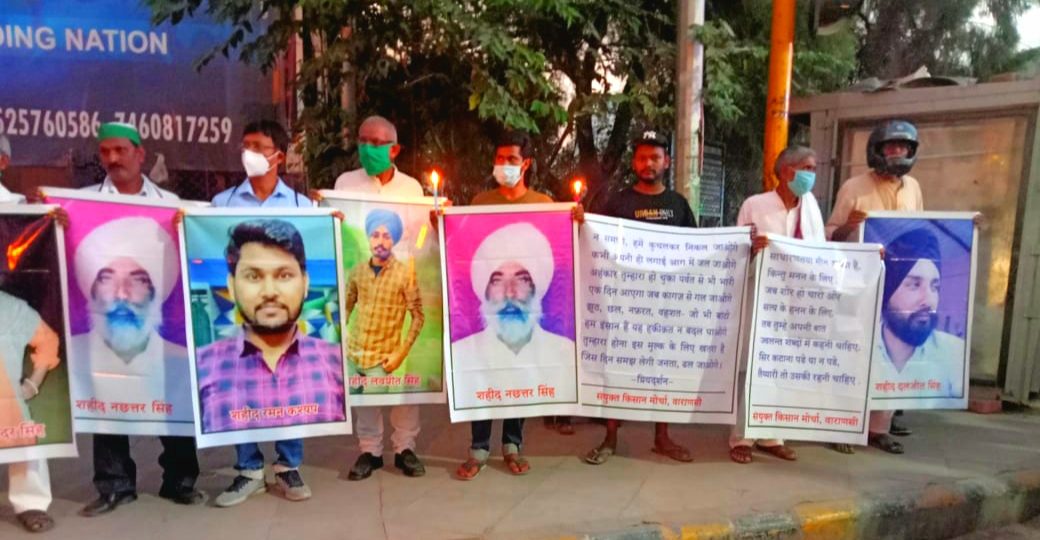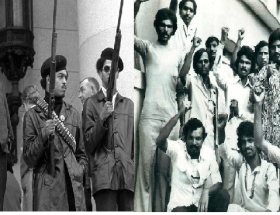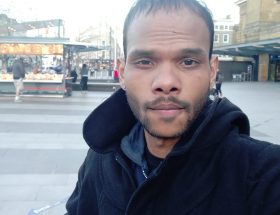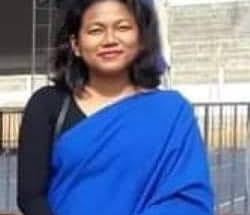Kuffir
Do Brahmins hit and run? Meaning: do Brahmins cause motor accidents and run away?
Two recent events say they do. The first event is a film, a work of fiction; the other a real incident which has become stranger than fiction. That’s what triggered these thoughts on accidents.
The first narrative refers to the movie ‘Jalsa’, released on an OTT platform a few weeks ago.[1] The lead character is a Menon, an almost Brahmin, who hits a pedestrian with her big car, and runs away. She is presented as a ‘powerful’ journalist in a news channel, who asks tough questions. It could be any Brahmin news anchor with her own show on any ‘national’ channel, yes?
And that line which Paul Coelho probably wrote for a Hindi movie, ‘And, when you want something, all the universe conspires in helping you to achieve it‘ comes true in the case of this almost Brahmin star journalist, to rescue her from facing any penalty. The police officer investigating the case, an eyewitness present at the scene, her driver, her maid, her boss and finally a reporter who’s pursuing the case—they all find reasons, excuses not to pin her down.
The second event involves a real life incident, the protagonist being an asli brahmin this time. This brahmin, son of a Union Minister, shot at and mowed down a group of protesting farmers with his car/cavalcade, on October 3, 2021. Eight people were killed in the incident, and neither the police nor the courts can tell you who was responsible despite the whole brutal tragedy happening in full public view. After a long long delay in arresting the accused,[2] and the ruling establishment using a string of diversionary and dilatory tactics, the wheels of justice moved very slowly, reluctantly. And the defendant got out on bail in February. And then he went back to jail and is seeking bail again. [3][4][5][6] He is now waging a minor war of attrition against his fellow members of the ruling class in various high places, and this as we know from long experience, is sure to culminate in his acquittal, ultimately, because all the universe (the political, the social, the justice and the media institutions etc.) will conspire in magically helping him.
And some of the protesting farmers of Lakhimpur Kheri are still in jail.[7]
But accidents are ‘unplanned’ or ‘unforeseen events’, as various dictionaries say. They could happen in all kinds of places: homes, workplaces, on the street. What’s relevant to the present discussion are accidents involving motor vehicles like cars, trucks, motorbikes etc. If they’re unforeseen or unplanned events, how can accidents be caused by humans? And why pick on Brahmins?
We’re looking at one subset of accidents: those that occur on the streets, involving motor vehicles. All advertisements for various kinds and brands of motor vehicles talk of power, one way or the other. The owners of those vehicles become wielders of such power, in effect, because the vehicles don’t drive themselves. But how can mere things mean power for people? What do guns mean? What do assembly lines mean? Don’t they all mean power for people who own/control them?
This note’s argument is that state power should be seen as an expression of caste power in India. The power of the ruling castes is transmuted into powerful motor cars on the road. This should be interpreted as the ‘power to take lives or let live’. Or sovereign power as Foucault would say.
Who are these power wielders? Who dominates the Indian roads? Some might say trucks, because of their size. But trucks’ movements are restricted in many cities, in many different ways. They are not allowed to ply during certain hours, on many city roads. Similar rules apply to motorized three wheelers. But cars aren’t disallowed on roads, at any hour. It’s like they’re kings of the roads, licensed to unrestricted access to any place in the country, anytime. Moreover, all other vehicles (including cars which function as cabs), could be considered ‘social transport’ in many ways, because they move men and goods engaged in the production processes that keep the economy going: they’re much like the various kinds of workers, of different skills and ranks, who people any factory shop floor. And most of the drivers are Bahujans, from the bottom rung of the social scale, while the owners are upper castes, or upper caste controlled businesses.
What remains are motorcycles. Across the world, several studies say, motorcyclists hurt themselves more than others in any encounters with vehicles of other kinds. They don’t spell power in the same way as cars: the power to discipline, punish or take lives. The power of the state exercised through caste power.
The lotos eaters in Indian academia and civil society, who hate even saying the word ‘Brahmin’ aloud, would not agree that it is caste power, and will probably go back again to Foucault and other such thinkers and say that state power operates through multivalent forms now, given the enormous expansion of technologies of recording, measuring, classifying, evaluating, conditioning and thus managing vast populations. Biopolitics, not just sovereignty or disciplinary power. Foucault is from France, where over 90% of the population owns cars, for a long time. Now the numbers have come down a bit because many are losing interest in cars as they have become more environment conscious.[8] While in India, only 2.2% of the population own cars (7-8% of households).[9] Do we live on the same planet? Indian academics do, it’d seem; they probably live in France and other fancy places and their research mostly reflects that.
The caste-less ‘republic’ of India has used all kinds of measures until now to obfuscate the overwhelming strength of the Brahmins and upper castes in all state institutions and the political economy. Aren’t over 90% of car owners in India from the same sections? And over half of them Brahmins? Isn’t that quite in line with India’s larger material reality, in relation to land: two to three jatis or so own 70—85% of agricultural land and urban property in each state in India. [10][11] [12] Collectively, don’t they hold the same power over all life in India as all absolute oligarchies of old?
All that data can be disputed or easily disproved, if possible, by conducting a caste census, not an OBC caste census as the ruling class academics have twisted the project into. If Indian intelligentsia was sincere in studying Indian society, they would have been demanding it for a long, long time. Right from 1951 itself. And resigned from their jobs and returned their awards etc as they did/do on numerous other occasions, if the exercise was not initiated. But they won’t.
Until then, this is the only little factoid that one needs to understand the whole extent of the caste system in India. Who owns cars in India? Only 2.2% of Indians own cars.
Instead of a caste census, which neither the Union government nor the fictitious civil society (both run by Brahmins, upper castes) really want, why not just look at the car ownership profile? Much easier to collect and collate. And will cost one-millionth as much as any duplicitous caste survey (not census, mind), which some states are planning. It will never happen because it will unveil the dark secret of the founding of India: that it was always meant to serve the Brahmins, and collaborator upper castes, in every state.
Finally, the same question again: Do Brahmins hit and run? Yes, they do, mostly. Because only they can, mostly.
~
Notes
- ‘Jalsa’, IMDB. https://www.imdb.com/title/tt15361028/
- ‘Lakhimpur: SC pulls up UP police over delay in arrests’, Hindustan Times, October 9, 2021. https://www.hindustantimes.com/india-news/lakhimpur-sc-pulls-up-up-police-over-delay-in-arrests-101633742171847.html
- ‘Lakhimpur Incident: FIR Filed Against Ashish Misra, Oppn Stopped From Visiting Violence-Hit Area | Key Points’, ABP News, October 4, 2021. https://news.abplive.com/news/india/lakhimpur-incident-fir-filed-against-ashish-misra-oppn-stopped-from-visiting-violence-hit-area-key-points-1485803
- ‘Lakhimpur: Ashish Mishra mowed down farmers, opened fire at at them, says FIR’ Times of India, October 5, 2021. https://timesofindia.indiatimes.com/india/lakhimpur-ashish-mishra-mowed-down-farmers-opened-fire-at-them-says-fir/articleshow/86788194.cms
- ‘Minister’s Son, Accused Of Running Over Farmers In UP, Released From Jail’, NDTV, February 15, 2022. https://www.ndtv.com/india-news/ministers-son-accused-of-running-over-farmers-in-up-released-from-jail-2769794
- ‘Lakhimpur Kheri case: Family of farmers moves SC against Ashish Mishra’s bail’ Indian Express, February 22, 2022. https://indianexpress.com/article/india/lakhimpur-kheri-case-family-of-farmers-moves-sc-against-ashish-mishras-bail-7784519/
- ‘Farmers begin 75-hour strike in Lakhimpur Kheri, call for minister’s sacking’, Hindustan Times, August 18, 2022. https://www.hindustantimes.com/india-news/farmers-begin-75-hour-stir-in-lakhimpur-kheri-want-union-minister-sacked-101660804049679-amp.html
- ‘France falls out of love with the car’, The Guardian, November 9, 2014. https://www.theguardian.com/world/2014/nov/09/france-car-ownership-sales-downturn
- ‘India has 22 cars per 1,000 individuals: Amitabh Kant’, The Economic Times, December 12, 2018.
https://auto.economictimes.indiatimes.com/news/passenger-vehicle/cars/india-has-22-cars-per-1000-individuals-amitabh-kant/67059021 - ‘Brahmanism: Colonization of Words and Land’, Round Table India, August 13, 2015. https://www.roundtableindia.co.in/colonization-of-knowledge-produces-colonization-of-land-and-life/
- ‘The cashlessness of the Bahujan’, Round Table India, December 14, 2016. https://www.roundtableindia.co.in/the-cashlessness-of-the-bahujan/
- ‘Bahujans and Brahmins: Why their realities shall always collide, not converge’, Round Table India, August 16, 2017. https://www.roundtableindia.co.in/bahujans-and-progressive-brahmins-adversaries-not-allies/










